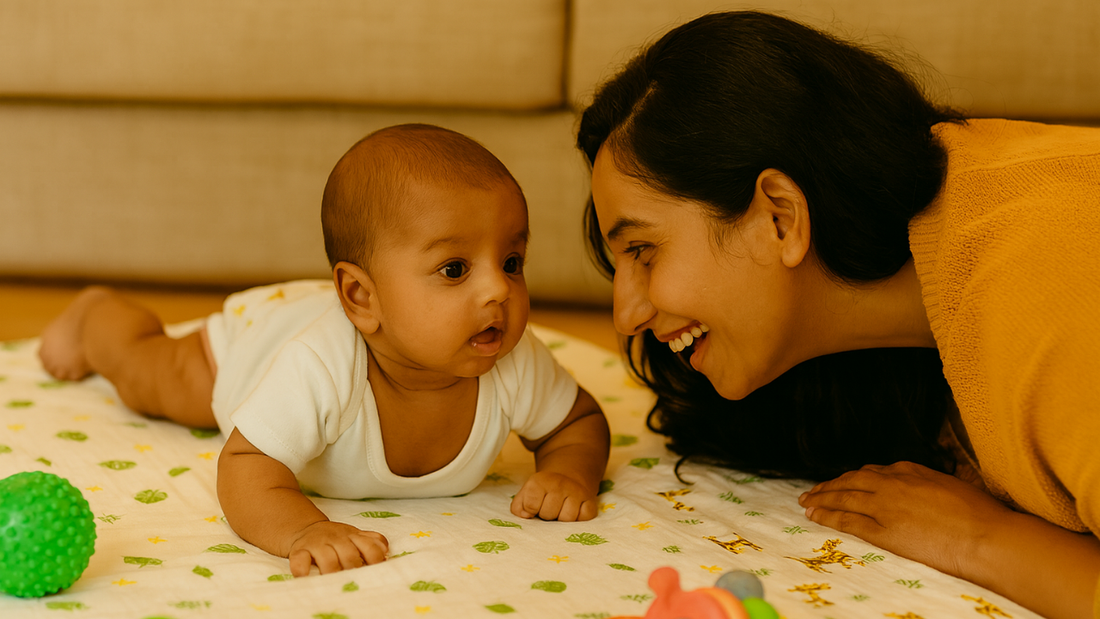
Month 3 Milestone: Head Control & Tummy Time: Building Neck Strength and Visual Tracking
LiLLBUDBy the third month, babies start showing exciting progress in their physical development. One of the most important milestones at this stage is head control—the ability to hold their head steady for short periods. Along with this comes the growing importance of tummy time, which plays a huge role in strengthening neck, shoulder, and core muscles while also stimulating visual tracking skills.
Why Head Control Matters
At around 3 months, your baby begins to lift and hold their head up when placed on their tummy or supported in a sitting position. This is a vital milestone because:
-
Neck & Core Strength: Stronger muscles prepare your baby for rolling, sitting, and crawling later.
-
Motor Development: Early head control is a foundation for overall motor skills and body coordination.
-
Safety: Babies with better head control can more comfortably feed and interact with their surroundings.
The Role of Tummy Time
Tummy time is more than just play—it’s a workout for your little one. Spending a few supervised minutes on their belly each day helps to:
-
Strengthen the neck, back, and shoulders.
-
Prevent flat head syndrome (positional plagiocephaly).
-
Boost visual tracking, as babies naturally lift their heads to look around and follow movement.
Encouraging Visual Tracking
By 3 months, babies begin following objects and faces with their eyes. Pairing tummy time with colorful toys, rattles, or even your smiling face can:
-
Encourage focus and eye-hand coordination.
-
Stimulate brain connections related to sight and movement.
-
Build early attention span and curiosity.
Tips for Parents
-
Start Small: Begin with short tummy time sessions (2–3 minutes), gradually increasing as your baby gets stronger.
-
Use Props: Place a rolled towel under the chest or use a tummy time pillow for support.
-
Engage Your Baby: Get down at their level—talk, sing, or shake a toy to encourage lifting and tracking.
-
Consistency is Key: Frequent short sessions are more effective than longer, occasional ones.
When to Watch Closely
All babies develop at their own pace. But if by the end of month 3 your baby rarely tries to lift their head, shows little interest in following movement, or dislikes tummy time consistently, it may be worth discussing with your pediatrician.
Bottom Line
Month 3 is all about building strength and coordination. Head control and tummy time aren’t just exercises—they’re stepping stones to rolling, sitting, and crawling. With a little encouragement and playful interaction, you’re helping your baby build the muscle power and visual skills they’ll need for all the exciting milestones ahead.

